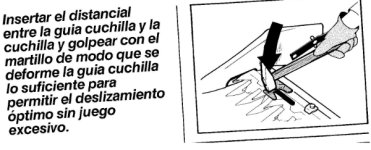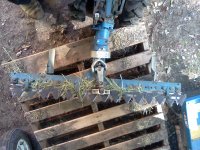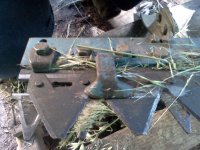mkeith
New member
I recently bought a used sickle/cutter bar mower.
I ran it for a while today on my BCS tractor. (I believe it is a 715). The results were only so-so, so I wanted some advice. What I saw was that not all grass was cut. Some was just pushed down. Also, a lot of grass got trapped between the moving blades and the stationary blades. And kind of got pulverized there. In the densest tallest grass areas with the driest, stiffest grass it did pretty well.
Anyway, here are the questions:
First, the blades are serrated. Can I sharpen them with a file anyway? Do you take the blade assembly off to sharpen it? How often do you sharpen?
Second, the guy I bought it from (seems quite knowledgeable) said that there are two adjustments, one to keep the moving blades pushed against the lower blades, and one to keep the bar (behind the moving blades) pushed forward.
He said that the first adjustment (keeping cutting blades pushed against each other) is done by hitting the tension arms with a hammer at a particular angle (loosening is done by hitting them right in the middle). He suggested using a punch to avoid damage. I did try this, and it didn't seem to increase the tension. The blades still seemed a bit loose. Maybe I didn't hit it hard enough? Not the right angle? Maybe the procedure is wrong?
How do you do the second adjustment? I think he told me, but I forgot. It may have been the same basic idea as the first one.
Does anyone have a link to a user's manual for this thing? I think I found a service manual online, but it is almost entirely just diagrams.
Also, what do you use for lubrication? I think I saw somewhere online one guy used chainsaw bar lube. Seems like that would be OK. Note: it has two zerk fittings, but I am talking about lubing the sliding parts, not the oscillating mechanism.
Lastly, I was running at pretty low throttle setting, afraid of wearing out the cutter needlessly. What is the correct throttle setting for a cutter bar?
I know it is a lot of questions. I will be grateful for any and all answers.
--McKenzie
I ran it for a while today on my BCS tractor. (I believe it is a 715). The results were only so-so, so I wanted some advice. What I saw was that not all grass was cut. Some was just pushed down. Also, a lot of grass got trapped between the moving blades and the stationary blades. And kind of got pulverized there. In the densest tallest grass areas with the driest, stiffest grass it did pretty well.
Anyway, here are the questions:
First, the blades are serrated. Can I sharpen them with a file anyway? Do you take the blade assembly off to sharpen it? How often do you sharpen?
Second, the guy I bought it from (seems quite knowledgeable) said that there are two adjustments, one to keep the moving blades pushed against the lower blades, and one to keep the bar (behind the moving blades) pushed forward.
He said that the first adjustment (keeping cutting blades pushed against each other) is done by hitting the tension arms with a hammer at a particular angle (loosening is done by hitting them right in the middle). He suggested using a punch to avoid damage. I did try this, and it didn't seem to increase the tension. The blades still seemed a bit loose. Maybe I didn't hit it hard enough? Not the right angle? Maybe the procedure is wrong?
How do you do the second adjustment? I think he told me, but I forgot. It may have been the same basic idea as the first one.
Does anyone have a link to a user's manual for this thing? I think I found a service manual online, but it is almost entirely just diagrams.
Also, what do you use for lubrication? I think I saw somewhere online one guy used chainsaw bar lube. Seems like that would be OK. Note: it has two zerk fittings, but I am talking about lubing the sliding parts, not the oscillating mechanism.
Lastly, I was running at pretty low throttle setting, afraid of wearing out the cutter needlessly. What is the correct throttle setting for a cutter bar?
I know it is a lot of questions. I will be grateful for any and all answers.
--McKenzie


